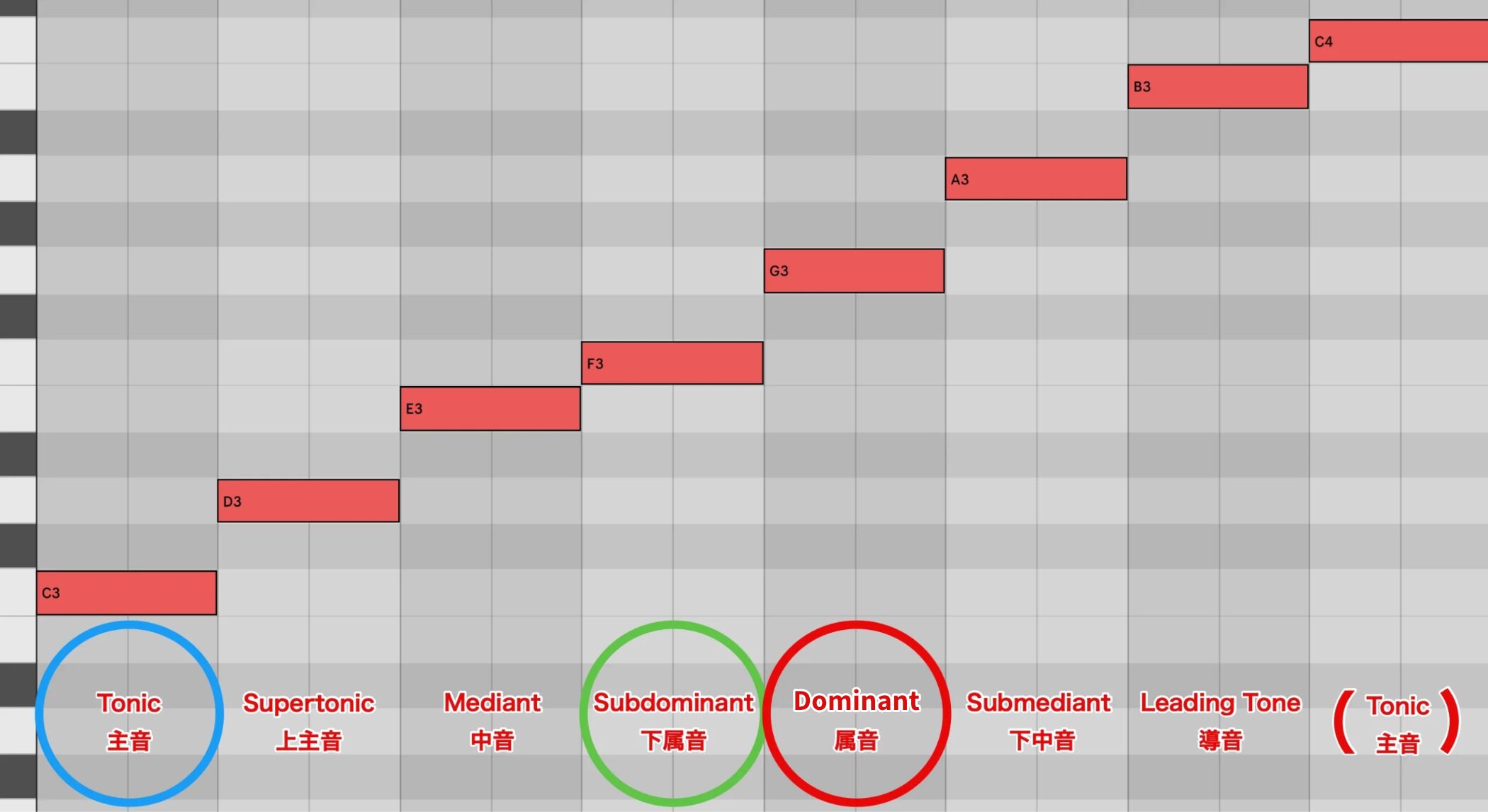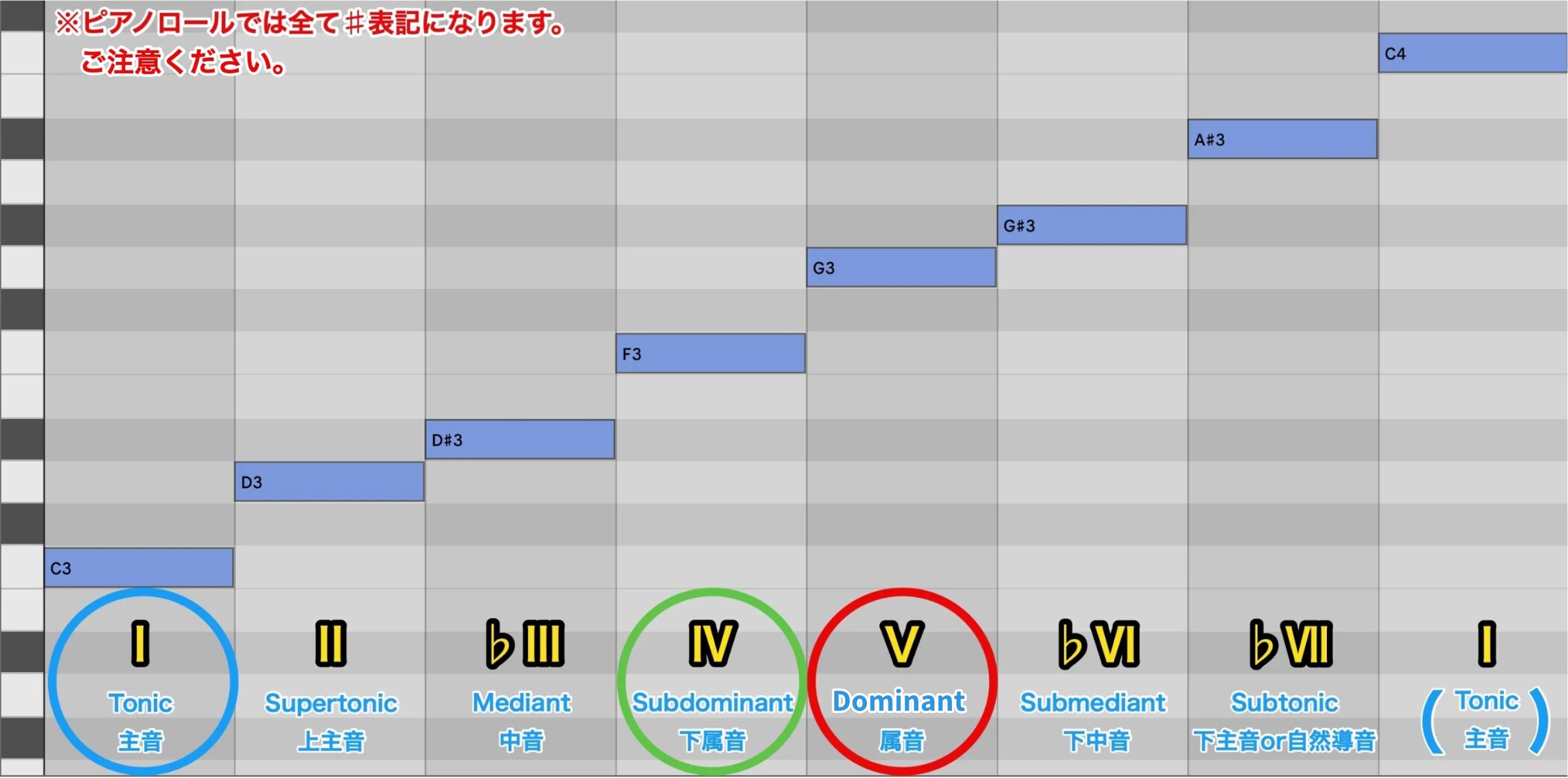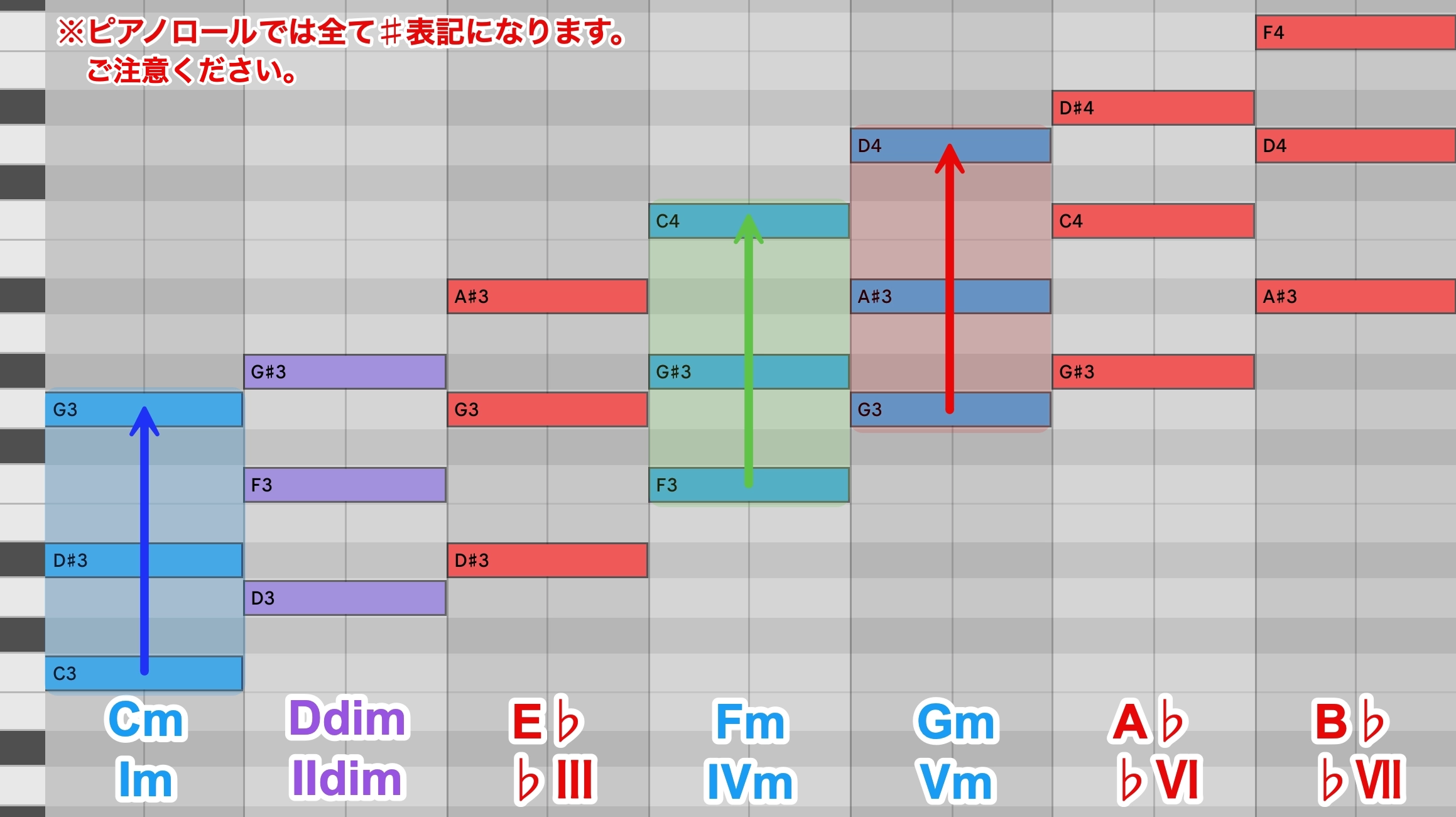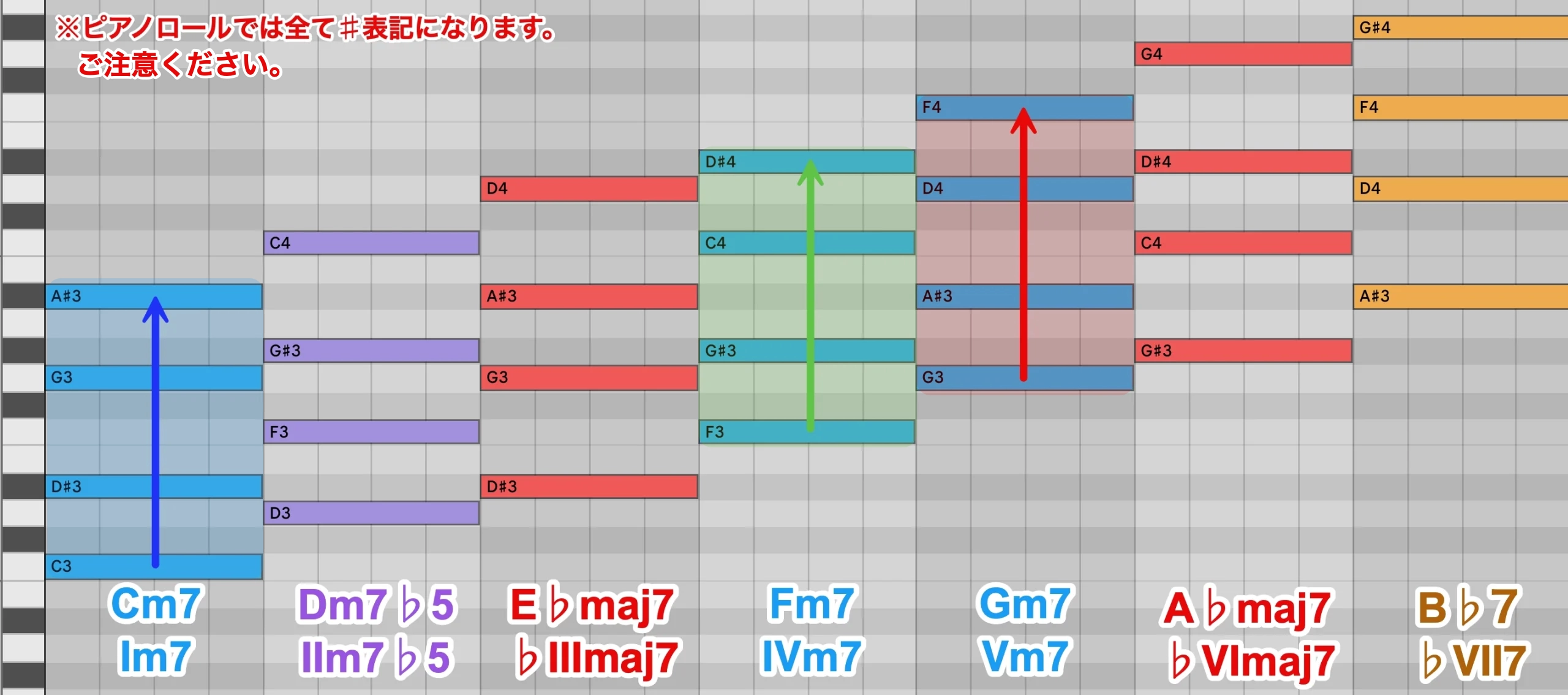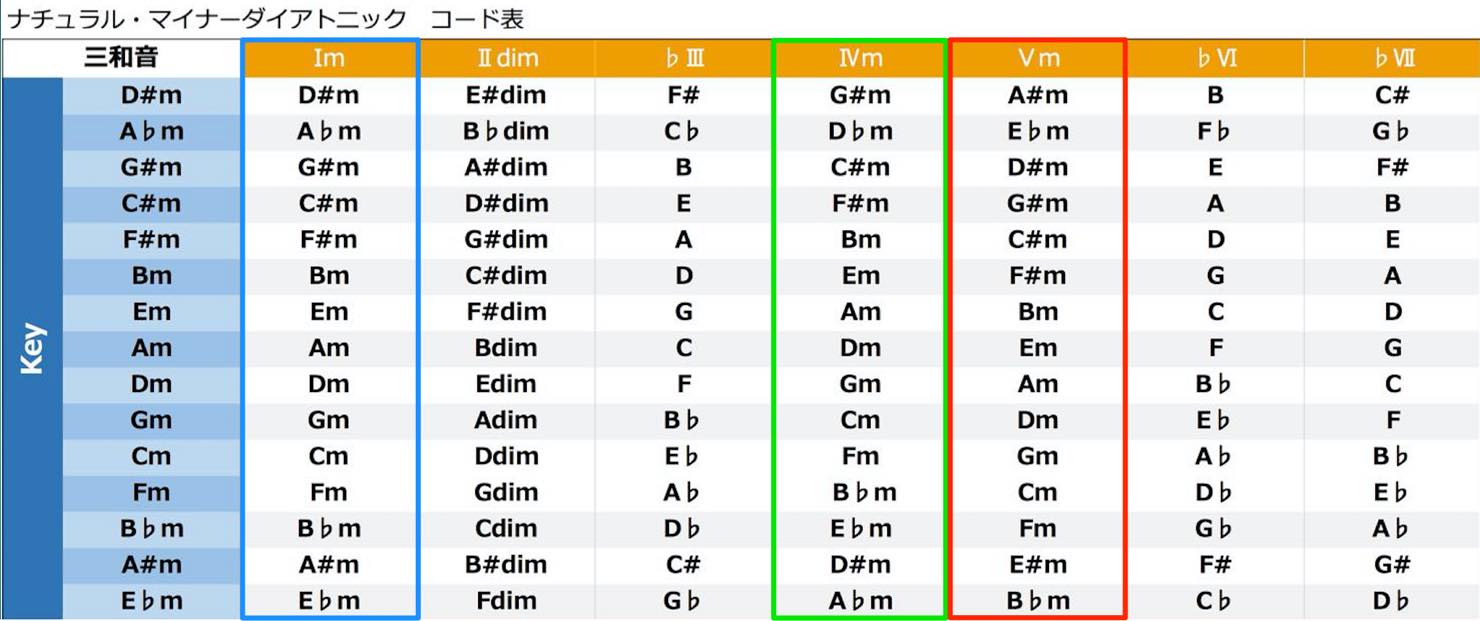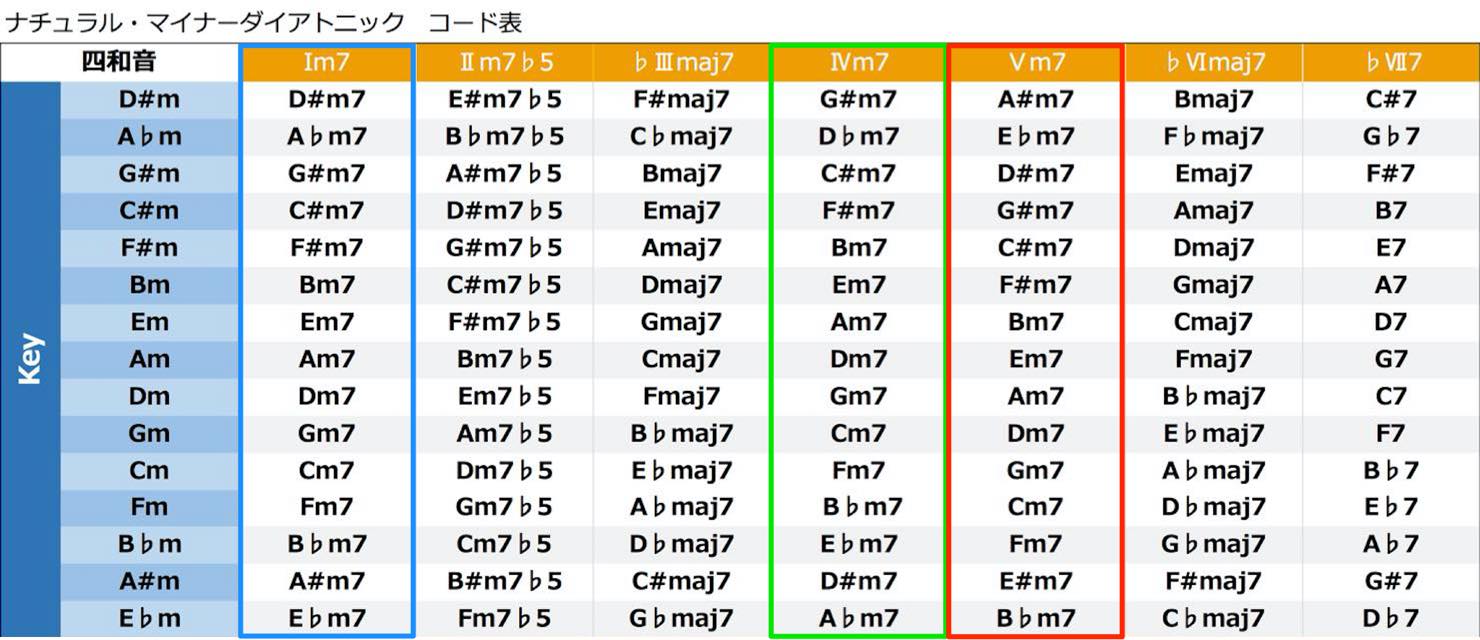主要三和音(ナチュラル・マイナー)とその機能(ファンクション)①/音楽理論講座
ナチュラル・マイナーダイアトニックのコードの機能を理解する
今回は、ナチュラル・マイナーダイアトニックコードをどのように使用すれば”展開”が作れるのかを学んでいきます。
そして、メジャーとの違いを意識しながら、マイナーに3つの種類がある理由についても少しずつ紐解いていきましょう。
メジャーについては、第28回で学びましたね。
ナチュラル・マイナーでも、ストーリー性を意識する楽曲では、”機能”=ファンクション(Function)を考慮してコードを並べる必要があります。
メジャーと同様に、機能を考慮せずにコードを並べてしまうと、同じところをぐるぐる回っているように聞こえたり、「起承転結」が不明瞭で聞きにくい展開になってしまうのです。
ナチュラル・マイナーの主要三和音
第一歩として、一番重要な3つのコード=主要三和音 (Primary chords)を押さえておきましょう。
Key=Cメジャー/Cマイナーをサンプルとします。
まずはメジャーからです。
メジャーの各スケールディグリーネームのなかに
- Tonic(トニック)
- Subdominant(サブドミナント)
- Dominant(ドミナント)
という言葉が出てきましたね。
そして、この3つの上にできたコードを主要3和音(Primary chords)と呼び、コード進行において非常に重要な意味を持っているということをお話ししました。
28.主要三和音とその機能(ファンクション)①
コードの機能を理解して展開を作る 今回は、これまで学んできたメジャー・ダイアトニックコードを、どのように使えば”展開"が作れるのか、”ストーリー性”がある楽曲
29.主要三和音とその機能(ファンクション)②
主要三和音 = 真のT・SD・Dのファンクション 前回、各メジャーキーの主要三和音についてご説明しました。 各キーのトニック、サブドミナント、ドミナント上に出来上が
30.主要三和音とその機能(ファンクション)③
D(ドミナント)のファンクション実践 前回で、各メジャーキーの真の意味でのTonic(トニック)、Subdominant(サブドミナント)を使用し、それぞれのファンク
31.ケーデンスと色々な動き
ケーデンスとは何か 前回までで、各キーでのTonic(トニック)、Subdominant(サブドミナント)、Dominant(ドミナント)コードとそのファンクション(
続いて、ナチュラル・マイナーの各スケールディグリーネームを見てみましょう。
♭が付かない表記や(III,VI,VII)、マイナーは小文字(ⅲ等)で示すなど、様々な表記法があります。
こちらにも
- Tonic(トニック)
- Subdominant(サブドミナント)
- Dominant(ドミナント)
がありますね。
その上にダイアトニックコードを作ってみましょう。
ここで、メジャーとマイナーの違いに注目しましょう。
メジャーの時の主要3和音は、すべてメジャー系の(M3rdを含んでいる)コード、「メジャー・トライアド」「メジャー・セブンス」「ドミナント・セブンス」でしたね。
対して、マイナー(ナチュラル)の主要3和音は、すべてマイナー系の(m3rdを含んでいる)コード、「マイナー・トライアド」「マイナー・セブンス」です。
まずはこの違いを押さえておいて下さい。
主要3和音のファンクション
さらに主要3和音のファンクションを振り返りましょう。
- T=Tonic(トニック)コード
Keyのなかで中心的な存在です。
強い安定感を持ち、曲の始まりや終わりのコードとしてよく用いられます。
❇︎楽曲分析をすると、トニックから始まっていない曲も多く見つけられると思います。
- SD(or S)=Subdominant(サブドミナント)コード
TとDの中間的な性格を持ち、コード進行に彩りや発展的な印象を与えることができるコードです。
TからSDに進むことで、コード進行に展開が生まれ、浮遊感も感じられます。
Dの前で使用すると、Tで得られる解決感をよりスムーズかつ強固なものにできます。
- D=Dominant(ドミナント)コード
I=T=Tonic(トニックコード)に戻ろうとする力が非常に強いコードです。
Dominant(ドミナント)からTonic(トニック)に戻ることで、コード進行がひと段落し、終わったという「終止感」を得ることができます。(特にIに戻る場合)
また、不安定さや緊張感、戻ろうとする力としては、VよりV7の方が強いです。
このイメージはDominant(ドミナント)コードを除いて、メジャーもナチュラル・マイナーも同じです。
ナチュラル・マイナーのドミナント(ドミナント・マイナー)である「Vm」「Vm7」は、リーディングトーンやトライトーンを含まないため、不安定さや緊張感がなく、戻ろうとする力が弱いということが1つのポイントになります。
マイナーの主要3和音は、Tm(トニック・マイナー)コード、 SDm(or Sm)(サブドミナント・マイナー)コード、 Dm(ドミナント・マイナー)コードと表記することもよくありますので、覚えておきましょう。
各ナチュラル・マイナーキーにおける主要3和音を一覧でも確認しておきましょう。
青がTまたはTm、緑がSDまたはSDm、赤がDまたはDmを表しています。
- 3和音
- 4和音
レラティブ・キーにおけるファンクションの変化
最後に、メジャーとナチュラル・マイナーが出てきたところで、レラティブ・キーにおけるファンクションの違いも確認しておきましょう。
CメジャーとAマイナーはレラティブの関係でしたね。
その場合、スケールから出来上がるコードは同じですが、ファンクションが異なってくるという点に注目してください。
- Cメジャーのダイアトニックコード(4和音)
- Aマイナーのダイアトニックコード(4和音)
このポイントを押さえておくと、楽曲分析の際のキー判別にも大いに役立ちます。
次回は、メジャーのときと同様に、ナチュラル・マイナーを「コード進行の最小単位」=「Cadence(ケーデンス)=終止形」に当てはめて確認していきます。
また、”戻ろうとする力”が働くリーディングトーンを加えたバージョンも見ていきましょう。







